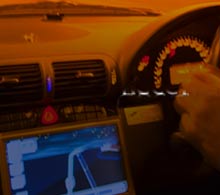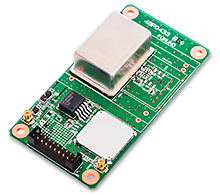Articles for ITS market Standardized EV charging infrastructure concerns in Europe, US, Japan and China - Kobe EVS 31 field report -
ESV was held in Japan for the first time in 13 years.
The International Conference on Electric Vehicles including EV, Fuel Cell Vehicles and Exhibition "EVS 31 (The 31st International Electric Vehicles Symposium)" was held at Kobe International Conference Hall from September 30th, 2018 to October 3rd, 2018.
EVS began in the 1980s and has been held around the world in Europe, America and Asia. In 1996 Japan hosted the 13th conference in Osaka, the 22nd conference in 2006 in Yokohama and 13 years later the current conference in Kobe. 1300 individuals from all over the world, including engineers, automobile manufacturers, automotive parts and battery manufacturers and researchers from educational institutions and universities attended.
At the exhibition, in addition to EV vehicles technical exhibits on chargers and batteries were very prominent. Japanese automobile manufacturers including Toyota, Nissan, Honda, Mazda, Suzuki, Subaru, Mitsubishi, and truck and bus makers exhibited. The venue atmosphere was like a motor show.
EV joint development based on Toyota is moving forward
 World premiere of North America version Subaru "XV" which is Plug-in hybrid car.
World premiere of North America version Subaru "XV" which is Plug-in hybrid car.
 Subaru's plug-in hybrid car technology exhibited using a transplanted 2 motor system from Toyota
Subaru's plug-in hybrid car technology exhibited using a transplanted 2 motor system from Toyota
Among them, Subaru unveiled the plug-in hybrid car "Crosstrek" to the world for the first time. It is a North American version of the Japanese cross over car "VX”. "XV" and incorporates the new model Subaru Global Platform (SGP) adopted from "Impreza". The driving performance has improved dramatically when compared with the previous cars and sales are strong in Japan. In October 2018 the hybrid system "e-BOXER" was adopted into the "Forester" and has just appeared.
In this plug-in hybrid car Subaru adopted a newly developed two-motor system rather than just improving the one motor "e-BOXER". According to Subaru's development manager the motor is the same as Toyota's hybrid system "THS II". Subaru uses technology on their plug-in hybrid vehicles provided by Toyota such as the inverters controlling motors and onboard chargers. Toyota and Subaru have undertaken comprehensive technical alliances such as collaborating on the development of the sports car "86" and "BRZ". However this is the first time for a joint development of the electric car system.
Joint development of electric vehicles among the Japanese automobile manufacturers, mainly Toyota is expected to expand in the future. This is because electric car systems need huge initial investments. It is also necessary for newly adopted electrical and IT related technicians who have, up to now not previously engaged in the automobile industry. Toyota centrally manages such costs and labor and has the mechanism to provide to Subaru, Mazda, Suzuki and Daihatsu (subsidiary of Toyota) who are already technically affiliated with Toyota. As part of that EV C. A Spirit partnership includes a core EV development company by Toyota and Toyota's technology subsidiary DENSO was founded in 2017.
Charging infrastructure issues delaying full-scale EV standardized distribution
 Nissan New "Leaf" which has CHAdeMO charging system
Nissan New "Leaf" which has CHAdeMO charging system
 European and US car manufacturers compete against CHAdeMO with their own charging standard CCS
European and US car manufacturers compete against CHAdeMO with their own charging standard CCS
In order for EV to gain popularity three issues must be overcome: (1) cost of storage battery, (2) mileage per charge, and (3) charging infrastructure.
There has been a big change in the cost of storage batteries in recent years. For example lead-acid storage batteries are used in automobiles for engine start up and a power source for electrical equipment inside the car. For EV’s, lead-acid batteries were mainstream until the 1980s but due to low output per volume and heavy weight they are not suitable for mass production except for specific vehicles like small motorcycle EV’s.
Subsequently Toyota adopted a nickel-metal hydride battery for their hybrid vehicles causing the cost of larger batteries to drop sharply. Furthermore in recent years enforcement of the New Energy Vehicle mandate is mandatory for all 2019 EV’s. This caused a dramatic increase in lithium ion batteries production while associated costs have been drastically decreased.
By reducing the cost of such storage batteries it was possible to install more storage batteries and improve the mileage per charge. Timing and frequency of charging using the information and communication between the EV and the outside infrastructure (called a connected car) convenience is improved even with smaller battery capacity and shorter traveling distances in an EV.
The third challenge is charging infrastructure. Nissan "Reef" and Mitsubishi "i-MiEV" were mass-produced in Japan during 2010 and the government provided a strengthened subsidy system for installing charger. The number of chargers for EV has increased all over the country. According to the map publisher Zenrin, as of May 2018 ordinary chargers with 100 to 200 V alternating current are at 21,200 units. While 7,420 fast chargers that convert alternating current to direct current and charge with high output in a shorter time have also been installed. However the overall world view shows there are still significant challenges in terms of charging infrastructure distribution. Having a standardized charging infrastructure is imperative to the EV’s future success.
There are three types of fast chargers: CHAdeMO system in Japan, GB/T system in China, CCS (Combined Connector System) in Europe and the United States. In August of this year Japan and China announced that they will cooperate on rapid charging standards. Specifically Japan will provide technical assistance to China.
On the other hand with regard to the CCS system there is no appearance of cooperation between Japan and China. Meanwhile CCS is recommended by three major German companies (Daimler, BMW, VW group) and three major US companies (GM, Ford, FCA).
In the Panel Discussion at EVS 31 a representative of the organization promoting CCS said, "CCS is the most useful method for users and we have no ideas for collaborating with CHAdeMO or GB/T.
EVS 31's scene revealed again that there are still a lot of challenges left for full-scale, standardized distribution of EV.
Writer introduction

Mr. Kenji Momota Automotive journalist
His major is the world automotive industry and he is also familiar with the energy industry, IT and the aging society problem as the related fields. He acts around the world based in Japan and USA and writes for the general magazines, the technology journals and the automotive related media etc.
He is also commentator of motor race and world's motor show on TV program based on his career of the driver of Indy Racing League and NASCAR. In recent years, he has been covering about a paradigm shift from developed countries to developing countries, the motorized vehicle like EV and the telematics.
FURUNO ITS Journal
Click here for the latest articles after 2022 (in Japanese)2022
- The "realistic" self-driving roadmap shown by the Japanese government and a hands-on report on the latest Subaru EyeSight X
- Will FCVs (Fuel Cell Vehicles) Become Popular? ~New Movement in Toyota and Honda~
- The 'Complete' online sales of new cars start in Japan. Will this new way of buying cars take root?
- Many Firsts! On-Site Report from Tokyo Auto Salon 2022 - The author, who knows what goes on behind the scenes, looks back on 40 years of history. -
2021
- "Moving toward zero traffic fatalities for four-wheeled and two-wheeled vehicles globally in 2050" ~Experience on Honda's latest safety technologies~
- Tsuneishi Shipbuilding's building and DX, an exclusive visit to the main factory
- Japan's Smart City: New Moves toward Practical Use
- When will self-driving buses (service cars) be put to "full-scale" practical use?
- Utilization vehicle data during disasters
- Toyota-led Connected Technology to Transform Commercial Vehicle Business -From light trucks to large trucks and buses-
- Toyota enters the connected car "Personalization" business
- Japanese automakers' carbon-neutral strategies swept up in ESG investment
- Drive experience of the latest autonomous vehicle models and advanced driving support systems
- Will carbon neutrality accelerate the trend to strengthen LCA (Life Cycle Assessment)?
- Semiconductor shortage exposes realities of the automotive industry
- Online Autonomous Driving Contest Enhancing development of Human Resources
2020
- What happens to CASE when gas cars are banned in Japan?
- When will Flying Cars be launched?
- Expectation vs. reality:Autonomous Driving in Japan
- V2X, Becoming increasingly important in autonomous driving
- Technology of Subaru “EyeSight X”
- Lifestyle-oriented French cars gain popularity in Japan
- Human-oriented smart cities are wanted
- MaaS and CASE, how would automotive industry change after COVID-19?
- The beginning of virtualization era, triggered by COVID-19
- Trend of EV shift and consumer demands
- TOYOTA Press conference about ADAS - Releasing algorithm for "sudden acceleration suppression during attempted sudden acceleration" free of charge -
- The Japanese automotive industry in 2020 - 3 turning points -
- "Using a smartphone while driving" and "Level 3 automated driving"
2019
- Motor show business model is at a turning point - Tokyo Motor Show Report -
- Commercialization and monetization of MaaS - ITS World Congress Singapore Report -
- Android Automotive pays attention to V2X - Report from the Frankfurt Motor Show 2019 in Germany -
- Automobile Distribution Revolution and DCM (Data Communication Module)
- Connected business potential and newly proposed "eMaaS" by Honda
- 5G services for practical use are multiplying
- Connectivity technologies attracting attention due to frequent traffic accidents
- Shanghai Motor Show report -SUV, EV, Automated car & 5G-
- Drone Business roadmap and updates to Michibiki (Quasi-Zenith Satellite System)
- MaaS (Mobility as a Service) "town development." Full-scale promotion for a national project
- CES organizer states "Data Period in 2020s." Transformation of the Automotive Industry in CES, US "-CES2019 Report-"
- "Return to Origin" directed towards the age of change, automatic operation and connectivity
2018
- New proposal for Private Car Automated Driving Level and other Hot 5G Technology Topics
- Standardized EV charging infrastructure concerns in Europe, US, Japan and China - Kobe EVS 31 field report -
- Touring a pure car carrier and a test drive of the latest hybrid car
- Planning stage products are exhibited at the newly established visualized mobility service "TOYOTA MOBILITY SHOWROOM".
- Potential “Community Car-share” program promoted by local residents
- CES Asia Report 2108
- Companies attempt new Vehicle-to-Infrastructure communications, including traffic volume measurements and vehicle positioning. -ITS Asia Pacific Forum in Fukuoka-
- Geneva show in Switzerland. Flying cars and MaaS (Mobility as a Service) were hot topics.
- EV (Electric Vehicle) proposals by country
- MaaS competition through service mobilization, M & A and technical field collaboration is accelerating. - The CES 2018 Report -
2017
- Big data’s initiative and fight for the automotive industry. Cooperation among companies becomes increasingly important.
- Connected car and road-to-vehicle communication automatic operation
- ETC (Electronic Toll Collection) and ETC2.0. Current situation and projected future
- Rapid development of sharing economy
- Germany is first to recognize level 3 automated driving
- ITS EU 2017 Field Reports -Automatic Operation and the eCall-
- From Infotainment to ITS, the competitive area is spreading in the car big data industry.
- GTC (GPU Technology Conference) Report and the de facto standardization of AI (artificial intelligence)
- Renesas' new challenge! "e-AI Solution" and "Renesas Autonomy"
- The Automobile industry is shifting from a manufacturing industry to a service industry.
- The movement toward accident countermeasures for aging drivers in Japan
- Fusion of ride sharing and fully automated driving is advancing in the USA.
2016
- Overview of the Quasi-Zenith Satellite System (QZSS) and advancements toward full-scale practical use including the Tokyo Olympic Games - G-space EXPO 2016 report-
- Japan’s automated driving project "SIP-adus" will be a large demonstration experiment.
- The International Home Care & Rehabilitation Exhibition. There were many car manufactures with exhibits booths at this show.
- Japanese car manufacturers starting to concentrate on strengthening the ADAS system
- A new movement of legislation for autonomous cars
- Cyber Security and “AGL”, the new OS for automotive are hot topics in the connected car industry
- “High precision 3D map” the key future of autonomous car and pedestrian dead reckoning
- Chinese “BAT” is accelerating their business in the EV (Electric Vehicle) market
- Tesla's original connection to Taiwan and the new transportation system technologies.
- "The main topic" of the Geneva Motor Show was how to strengthen "pedestrian protection"
- The probe data business is getting more competitive
- Reporting directly from the 2016 CES show "Data services will soon become the main revenue source of automotive industry"
2015
- Do the automated driving systems need the GNSS (Global Navigation Satellite System) ?
- ETC Version 2.0 is coming soon. A new service was announced at the Tokyo Motor Show and the possibility that is could be used as a device for older drivers.
- "Connected Horizon" and "eHorizon". Germany's leading parts supplier accelerates strengthening of "Big Data" for business



 EVS 31. At Kobe Port Island, a test ride for EV and fuel cell vehicles was also held.
EVS 31. At Kobe Port Island, a test ride for EV and fuel cell vehicles was also held. GPS/GNSS Receiver&Chips and Modules (positioning and timing)
GPS/GNSS Receiver&Chips and Modules (positioning and timing)